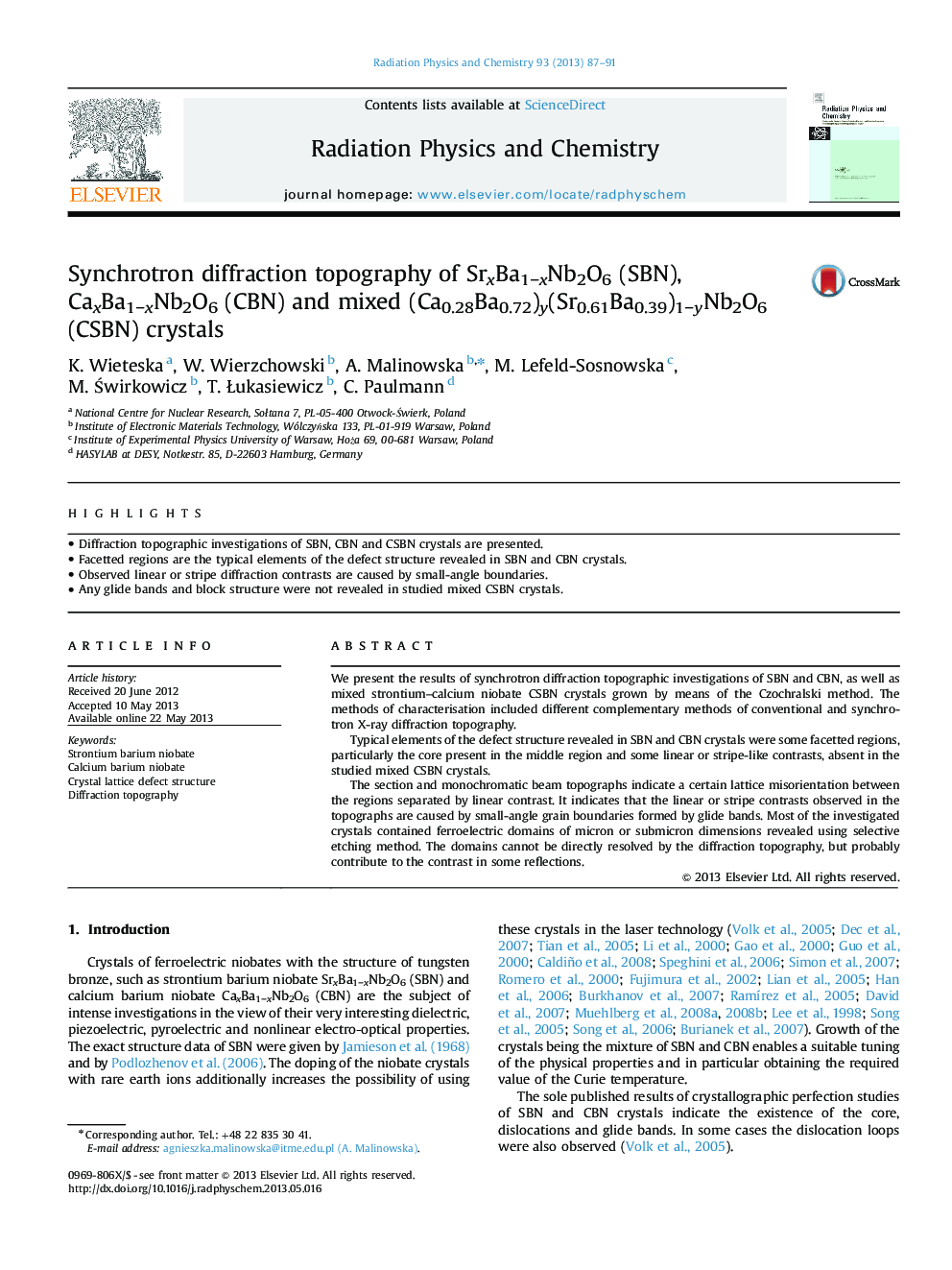| کد مقاله | کد نشریه | سال انتشار | مقاله انگلیسی | نسخه تمام متن |
|---|---|---|---|---|
| 1891431 | 1533531 | 2013 | 5 صفحه PDF | دانلود رایگان |

• Diffraction topographic investigations of SBN, CBN and CSBN crystals are presented.
• Facetted regions are the typical elements of the defect structure revealed in SBN and CBN crystals.
• Observed linear or stripe diffraction contrasts are caused by small-angle boundaries.
• Any glide bands and block structure were not revealed in studied mixed CSBN crystals.
We present the results of synchrotron diffraction topographic investigations of SBN and CBN, as well as mixed strontium–calcium niobate CSBN crystals grown by means of the Czochralski method. The methods of characterisation included different complementary methods of conventional and synchrotron X-ray diffraction topography.Typical elements of the defect structure revealed in SBN and CBN crystals were some facetted regions, particularly the core present in the middle region and some linear or stripe-like contrasts, absent in the studied mixed CSBN crystals.The section and monochromatic beam topographs indicate a certain lattice misorientation between the regions separated by linear contrast. It indicates that the linear or stripe contrasts observed in the topographs are caused by small-angle grain boundaries formed by glide bands. Most of the investigated crystals contained ferroelectric domains of micron or submicron dimensions revealed using selective etching method. The domains cannot be directly resolved by the diffraction topography, but probably contribute to the contrast in some reflections.
Journal: Radiation Physics and Chemistry - Volume 93, December 2013, Pages 87–91